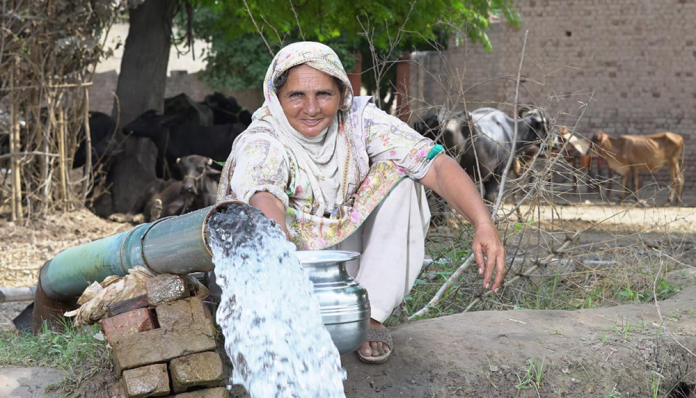China is currently leading the way in global sustainable development as a producer and investor in green technology and finance. Its development model always emphasizes shared growth, which, if we fully participate in, could benefit not only Pakistan but the entire South Asian region. The Sustainable Development Policy Institute’s (SDPI) deputy executive director, Dr. Sajid Amin Javed, stated that “our national development plans should and could play a vital role in this process.”
Fossil fuels, which presently account for around 65% of Pakistan’s energy mix, are a major source of dependence for the country’s expanding energy industry. Thus, government sustainable planning has always placed a high premium on achieving energy structure change.
From January to September 2023, Pakistan imported solar items worth USD 1.11 billion, or an estimated 4GW of modules, according to government estimates. Furthermore, Chinese businesses have made significant investments in Pakistan’s renewable energy projects. According to Pakistan-China Joint Chamber of Commerce and Industry (PCJCCI) President Moazzam Ghurki, of the USD 144 million in foreign capital invested in solar PV plants, USD 125 million comes from China, accounting for nearly 87% of the total capital.
Just as a human cannot walk on one leg, the coordination of distributed and centralized photovoltaics is necessary for the future of the global solar energy sector. Pakistan still has a lot of potential for distributed residential PV, excluding large-scale centralized installations. For example, a few hundred KW of power output from a panel combined with a tiny energy storage device can fulfill a farmer’s everyday electrical needs. Liu Yiyang, Deputy Secretary General of the China Photovoltaic Industry Association (CPIA), noted that Chinese enterprises should investigate further the potential of offering PV equipment with assured quality and affordable costs for such a market.
A few smallholder farmers in the Punjab province’s Bhagwela, Rahim Yar Khan, have previously erected solar tube wells. The solar-powered tube well that irrigates the farmers’ land has reduced expenses and increased agricultural harvests.
Eighty percent of participants in an NRSP post-installation impact study reported monthly savings of up to 15,000 Pakistani rupees (about EUR 50). It’s always a more economical and environmentally favorable option than diesel or mains electricity-powered pumps.
Senior Research Economist and former executive director of the CPEC Centre of Excellence at the PIDE, Mehmood Khalid, echoed, “Pakistan can both meet energy demand and effectively mitigate the adverse impacts of energy production on its environment by integrating advanced technologies and best practices that prioritize sustainable development.” “We must take advantage of opportunities in low-cost energy production, green energy initiatives, and climate finance due to Pakistan’s substantial import bill, which is primarily associated with oil and related products.” In order to effectively handle these issues, Pakistan must use its advantages, Sajid continued.
Consider Gwadar, a significant planned port that China and Pakistan constructed together. China has given each family in Gwadar 7,000 sets of solar panels. An additional 10,000 solar panel sets are currently being prepared and will be distributed to underprivileged individuals in Balochistan. This will provide much-needed assistance for the local community, which is facing an extended energy crisis.
The International Energy Agency (IEA) predicted that by 2026, the world’s total demand for energy will have increased by 3.4% in a report that was published in January. In order to offset this increase, China, Pakistan, and the rest of the world will need to step up efforts to promote nuclear energy at a record high and renewable energy sources like solar, wind, and hydropower.
I am a dedicated student currently in my seventh semester, pursuing a degree in International Relations. Alongside my academic pursuits, I am actively engaged in the professional field as a content writer at the Rangeinn website.







